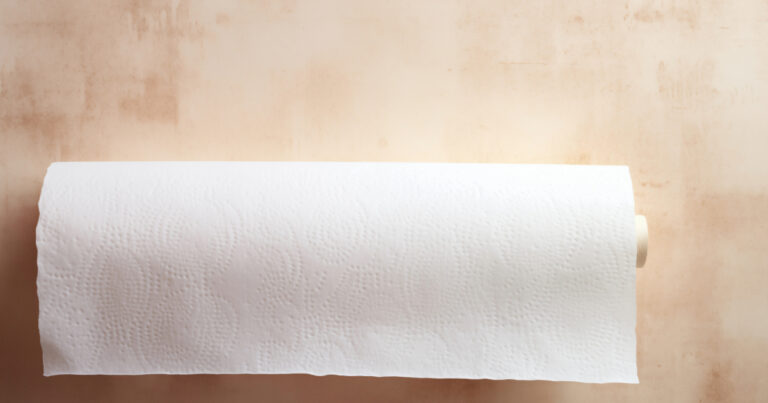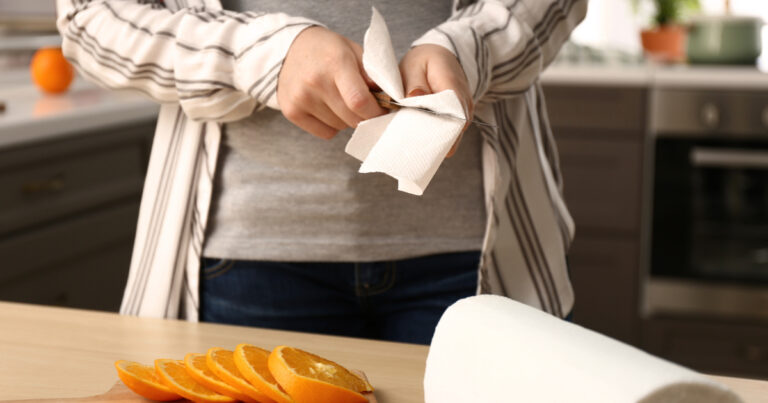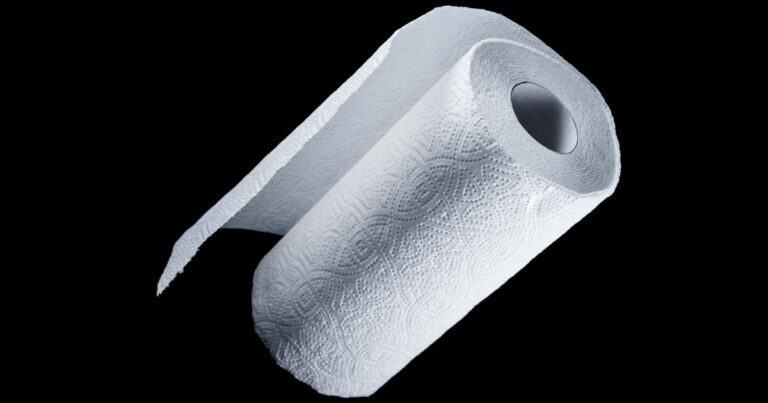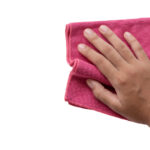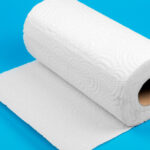Paper towels are a convenient way to clean up spills and messes in your home or workplace.
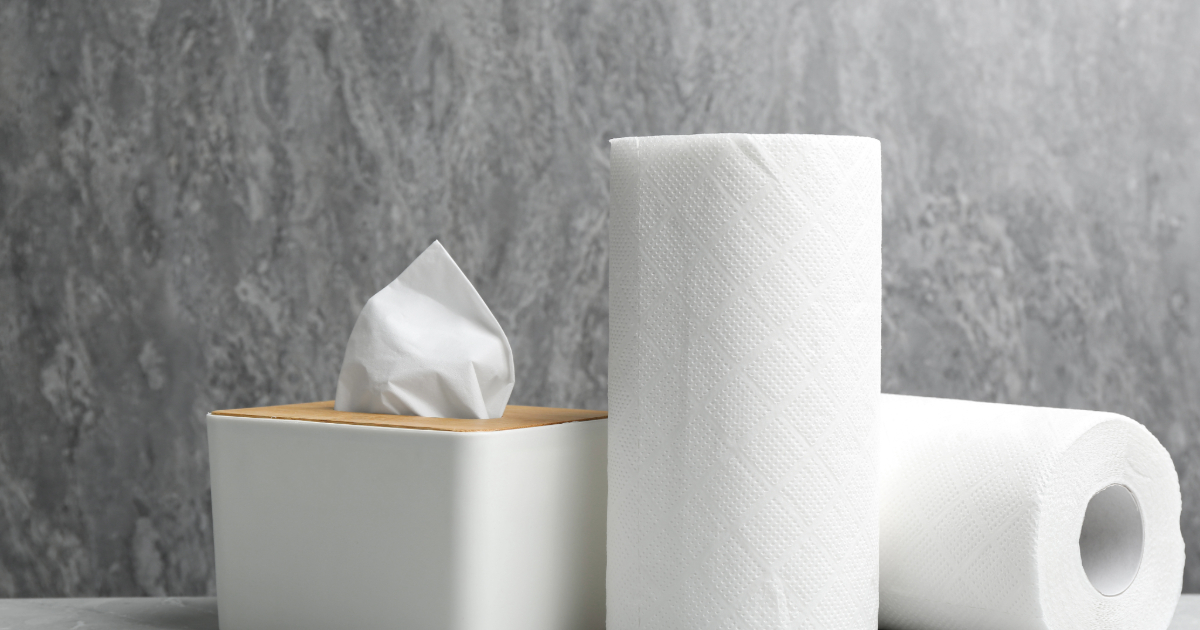
They are disposable, so you can simply throw them away after use without worrying about spreading germs.
However, some people wonder if paper towels are actually sterile or if they could potentially transmit bacteria and viruses from one surface to another.
How Paper Towels Are Made
To understand if paper towels are sterile, it helps to know a bit about how they are produced. The main ingredients in most paper towels are wood pulp and recycled fibers. The manufacturing process looks something like this:
- Wood chips and recycled paper products are pulped and cleaned to remove contaminants.
- The pulp mixture is bleached to make the paper white. Chlorine compounds are often used.
- The bleached pulp flows onto screens that remove water and compress the fibers into paper.
- The paper may be treated with lotions or scents for softness and odor control.
- The paper is cut to size, perforated, and rolled onto tubes.
As you can see, paper towels go through a cleaning and bleaching process that removes many microbes. However, they are not sterilized through autoclaving, gamma irradiation, or other methods that would kill all bacteria.
Key Takeaway: Paper towels contain wood pulp, recycled paper, and sometimes lotions or scents. They undergo a cleaning and bleaching process but are not sterilized.
Can Bacteria Live on Paper Towels?
Since paper towels are not sterile, it is possible for bacteria and other microorganisms to live on them under certain conditions. Here’s what the research shows:
- Moisture enables bacterial growth. Paper towels left damp or wet for extended periods can allow bacteria to multiply. Dry paper towels inhibit microbial growth.
- Food residues feed bacteria. Bacteria thrive on traces of food, grease, and other organic matter. Used paper towels with these residues can harbor microbes.
- Bleaching reduces but doesn’t eliminate bacteria. The bleaching chemicals used during manufacturing significantly reduce bacterial counts but don’t make paper towels sterile.
- Handling introduces microbes. Bacteria and viruses can be deposited on paper towels through contact with dirty hands, spills, and contaminated surfaces.
So while unused paper towels direct from the package should have relatively low microbial counts, they can become contaminated through use and improper storage.
Key Takeaway: Bacteria can live and multiply on used paper towels due to moisture, food residues, and contamination during use. Proper handling and storage reduces risk.
Are Paper Towels Safe for Medical Use?
Given that paper towels are not sterile, you may wonder if it’s safe to use them for first aid or other medical purposes. The short answer is no—sterile gauze and dressings designed for wound care are better choices.
Here’s why paper towels don’t measure up for medical applications:
- They are not sterile and could introduce pathogens into wounds.
- Fibers can break off and get stuck in wounds, causing irritation and infection.
- Lotions, fragrances, and dyes in some paper towels can further aggravate wounds.
- They lack the breathability of gauze, which promotes healing.
- Improper use of paper towels risks further contamination and complications.
While paper towels can temporarily stop bleeding in an emergency, they should be replaced with proper sterile dressings as soon as possible. Gauze and other medical materials are specifically designed not to stick to wounds or leave fibers behind.
Reducing Risks When Using Paper Towels
Given that paper towels are not sterile, what precautions should you take to use them safely? Here are some best practices:
- Store paper towels properly. Keep them in a clean, dry area away from contamination sources.
- Avoid excessive moisture. Don’t let used paper towels sit wet for long periods.
- Use judiciously on food surfaces. Be aware they can transmit bacteria from hands onto surfaces.
- Dispose promptly after use. Don’t reuse paper towels to wipe multiple surfaces.
- Wash hands before and after use. Clean hands reduce transfer of microbes.
- Use separate towels for raw meats. Prevent bacterial spread from raw proteins onto other kitchen surfaces.
- Buy quality brands. Higher-end paper towels may undergo additional sanitization procedures and quality control.
Following basic food safety, hygiene, and storage measures minimizes risks when using paper towels. While not sterile, their disposable nature still makes them a fairly hygienic cleaning option.
Paper Towel Alternatives
If you remain concerned about the microbial risks of paper towels, what are some alternatives? Here are a few options:
- Cloth towels – These harbor less bacteria when properly laundered between uses. Rotate multiple towels to allow drying.
- Paper napkins – Like paper towels but often stronger and more durable.
- Bamboo paper towels – Made from fast-growing bamboo, so more sustainable. Naturally antimicrobial.
- Microfiber cloths – Woven tightly so no particles get trapped. Can be washed repeatedly.
- Cellulose/cotton towels – Biodegradable and compostable. Free of chemical additives.
No material is completely free of microbes. But for eco-conscious consumers or those with chemical sensitivities, these may represent safer, cleaner options than standard paper towels.
FAQs
Are there antimicrobial paper towels?
Some paper towel products contain additional chemicals like triclosan to inhibit bacterial growth. However, excessive antimicrobial chemical use can contribute to antibiotic-resistant superbugs.
What about recycled paper towels?
Studies show recycled paper towels harbor higher bacterial counts compared to virgin paper towels. Additional processing helps reduce microbes, but does not sterilize recycled products.
Can you sterilize paper towels at home?
Techniques like microwaving or steaming can reduce bacteria on paper towels but will not completely sterilize them. Autoclaving is the only reliable home sterilization method, but is not practical for most paper products.
Are bleach-containing paper towels safer?
Bleach helps sanitize paper towels, but trace amounts may remain and get transferred onto food prep and eating surfaces. Safer alternatives are available than using bleach-laden paper towels in kitchens.
Conclusion
While paper towels are very convenient and user-friendly, it’s important to understand they are not sterile products.
Bacteria and other microbes can contaminate them during production, use, and storage without proper precautions.
Medical applications require sterile gauze and dressings, not paper towels. However, by following basic hygiene and food safety practices, paper towels pose minimal risks for general cleaning purposes.


